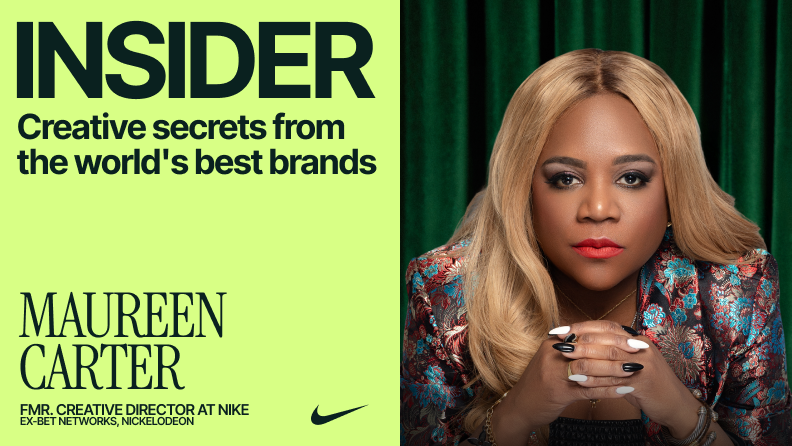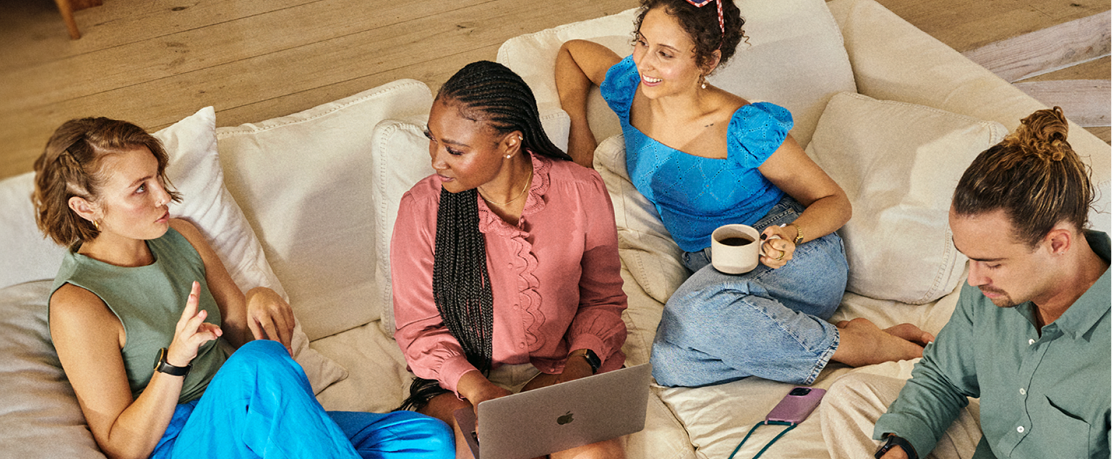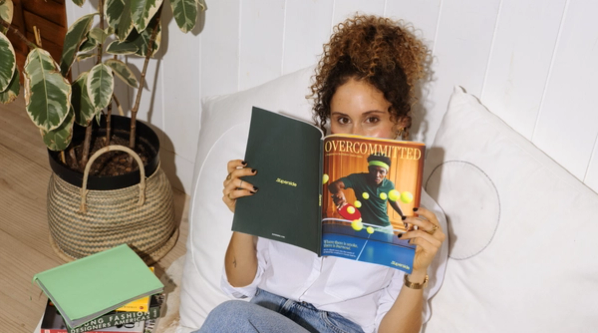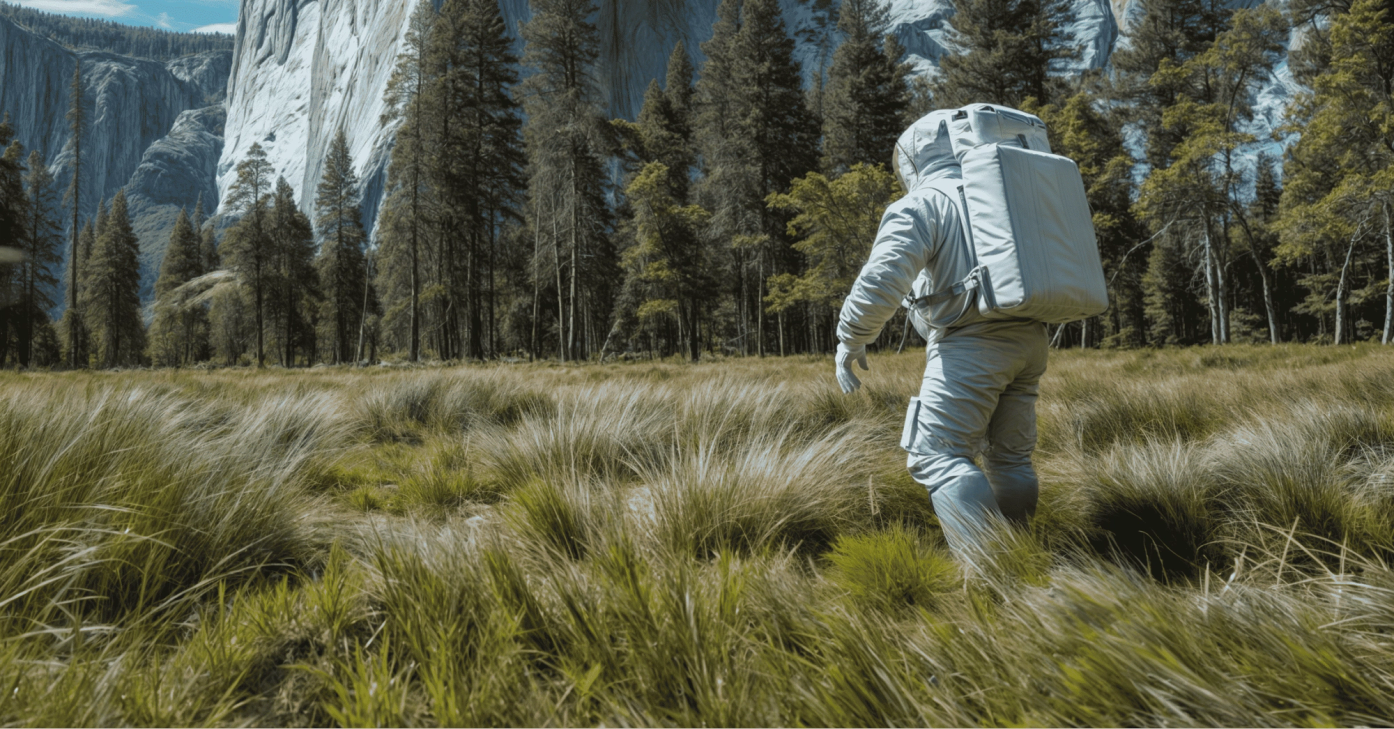The funny side of creative marketing
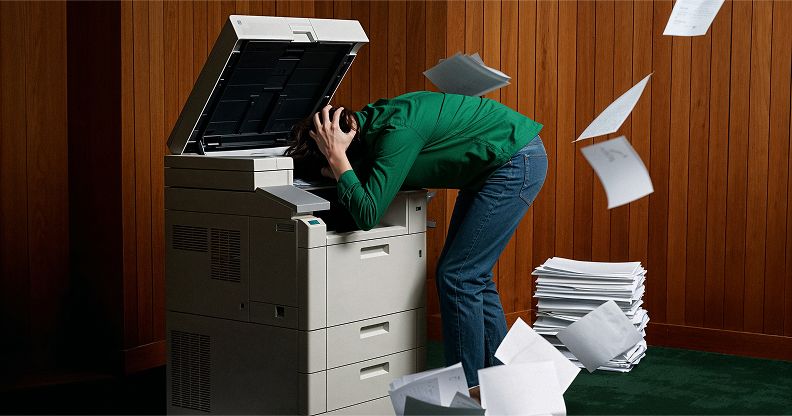
Creative team feeling cooked? Humor might be the secret sauce. Tom Fishburne aka "The Marketoonist" explores how laughter can cut through burnout, boost morale and bring back the bold ideas your brand actually needs. Sometimes, the best way to fix your marketing… having a little fun with it.
Between endless revision cycles, AI panic and marketing trends changing faster than we can say “metaverse,” burnout is real. But here’s the good news: there’s one thing that can help teams push through the chaos and creative clutter—humor.
At Superside’s recent Overcommitted Virtual Summit, cartoonist and marketing legend Tom Fishburne reminded us that laughter isn’t just a coping mechanism—it’s a creative superpower. In this recap, we’ll break down the biggest insights from the session. (Plus a few marketing mishaps you definitely don’t want to repeat).
The case for creative comedy
Humor is everywhere and it only takes opening our eyes to find it in our day-to-day lives. Fishburne kicked things off with a story about his dishwasher breaking down. The screen flashed “FU” over and over again—turns out, that stood for “failed unit.” While hilarious in hindsight, it was also a perfect metaphor for how brands often get in their own way.
Marketing and creative teams work tirelessly on campaigns, yet somehow, the final product can feel like a robotic, soulless mess. Why? Teams are too busy and we take ourselves too seriously.
According to Superside’s Overcommitted Report, 79% of creative professionals want to create bolder work—but they’re always racing against the clock. Despite their talent, most teams just don’t have the time or bandwidth to execute their best ideas. Lower-priority tasks, admin work and production overflow eat up the hours—and bold ideas get pushed to the back burner.
But here’s the good news: There’s one thing that can help teams push through the chaos—humor. Injecting humor helps cut through corporate nonsense, connects teams and makes our work (and lives) a lot more fun.
Our sense of humor is the best superpower we have to make sense of everything.

But somewhere along the way, we lose it. Literally.
Fishburne referenced a fascinating study from Stanford that showed how frequently people laugh over the course of a lifetime. The results? Not so funny.
Right after university, our sense of humor drops off a cliff—a phenomenon the researchers call the “humor cliff.” And for many, it doesn’t come back until retirement.
In other words, the workplace often sucks the fun right out of us—and that’s not just sad, it’s bad for business. Humor is a competitive advantage. It helps us bond with colleagues, challenge the status quo, and push ideas further.
Too frequently, we hold back our true selves at work and it can get in the way of doing our best work.

Marketing’s biggest creativity killers—and how humor can fix them
Fishburne outlined four major obstacles or myopias that crush creativity. Let’s break them down.
1. Technology myopia: The shiny object trap.
Every year, a new marketing tech promises to “revolutionize” everything—AI, VR, blockchain, nano-influencers (whatever those are). The result? A constant race to keep up rather than actually crafting great work.
💡 Solution: Instead of blindly chasing trends, focus on strategy first. As Fishburne put it, the best brands don’t just adopt new tech—they figure out how it fits their mission.
🚨 What NOT to do: Don’t be Chevrolet of Watsonville. This car dealership installed an AI chatbot on its website—only for it to recommend Teslas over Chevys. Ouch.
2. Creative myopia: The sea of sameness.
Ever notice how all logos are starting to look the same? The same thing is happening in marketing. AI-generated content, endless A/B testing and corporate fear of risk are leading to an epidemic of boring, forgettable work.
The irony? AI adoption has the potential to help creatives work faster and smarter—but only if it’s used with intention. Superside’s Overcommitted Report found:
- 96% of creative pros say AI will improve the quality of their designs.
- 93% say AI will help them design more quickly.
So what’s the catch? When everyone uses the same prompts, the same tools and the same templates—everything starts to look the same. That’s why creativity, human perspective and humor still matter more than ever.
Once we train our AI, I can't wait to see the wide variety of new ideas it comes up with.

💡 Solution: Stand out. Fishburne referenced a study by System1 that found bland ads perform 6.1X worse than bold, funny ones.
🚨 What NOT to do: Don’t let focus groups water down your ideas. Fishburne joked that every marketer has been in a meeting where an edgy, original concept gets edited into oblivion—until it’s just another safe, predictable campaign.
I believe creativity is a media expense. If we invest the time to really stand out from what everybody else is doing, we punch harder than our weight. And it can create real impact when you're developing a brand.

3. Customer myopia: Forgetting there’s a real person on the other side.
Marketers love talking about the customer journey. But when was the last time you actually acted like a customer?
We sometimes miss the real people who we're trying to connect with, and that's a missed opportunity.

Fishburne’s dishwasher disaster led him to create a cartoon illustrating the modern buying experience: endless pop-ups, impossible-to-reach support teams, and a flood of “We miss you!” emails five minutes after abandoning your cart.
💡 Solution: Treat your audience like humans.
🚨 What NOT to do: Don’t make your unsubscribe process harder than it needs to be. If your users need a decoder ring to find the “opt-out” button, you’re the problem.
This myopia prevents us from thinking about consumers as fully robust humans that they are. I think our sense of humor can point that out when we're creating design, marketing or creative experiences that missed that opportunity.

4. Silo myopia: Internal politics killing good ideas.
Anyone who’s worked in marketing knows the pain of internal approval processes. Legal, finance and compliance all get a say—leading to Frankenstein campaigns stitched together from five conflicting visions.
💡 Solution: Encourage open, unfiltered creativity.
🚨 What NOT to do: Don’t make everything a committee decision. As Fishburne put it, great ideas rarely survive a 12-person Zoom call.
I'm a big believer that fear kills creativity. Humor can help drive fear out of the system—helping us build the types of brands we all want to be a part of.

How humor helps teams survive (and thrive)
Beyond marketing, humor can transform workplace culture. Studies show we laugh less at work than anywhere else—yet teams that share a sense of humor collaborate better, handle stress more effectively and produce stronger ideas. That's why it's essential to make space for inspiration within your team and encourage humor as a part of your creative output.
Tips to bring humor into your marketing and culture:
- Know your brand’s sense of humor: Some brands thrive on sarcasm, while others use more traditional humor. Find your lane.
- Listen to your audience: What inside jokes already exist in your industry? What pain points make people laugh? Tap into that.
- Start small: Try a single funny LinkedIn post. A clever subject line. A meme. See how your audience responds.
- Use humor as an act of empathy: If you can make people laugh at a shared struggle, they’ll trust you more.
You only have to be mildly amusing and you already stand out remarkably well.

Humor isn’t optional—it’s essential
In an era of ever-evolving trends and copycat content, humor is one of the last true differentiators. It makes brands memorable, builds culture and—let’s be honest—makes work way more enjoyable.
Looking to break out from the sea of sameness? Superside helps creative teams do just that. Our global team of top-tier creatives works as a true extension of your in-house team—giving you the extra capacity, flexibility, and bold thinking you need to create the kind of work you want to be known for.
Whether you’re buried in banner ads or dreaming up your next big brand campaign, we’re here to help you push past burnout and get back to the kind of creative work that moves brands forward.
Tess is a Senior Content Specialist at Superside, where she crafts compelling content for SMBs and enterprise businesses. With over 10 years of experience, Tess has honed her skills writing for both B2B and B2C audiences, working across agencies and in-house creative teams. Her expertise spans industries, including international relations, tech, hospitality, and the music industry, where she has a knack for blending storytelling with strategic insights. When she’s not busy writing, you’ll likely find her curled up with a good book, binge-watching the latest Netflix obsession or hiking.
You may also like these

Results with heart: Inside Superside's empathy-fueled path to performance
Creative impact can’t be captured by a single metric or mood.But it is visible in results—and few understand this balance better than Superside's Gradwell Sears, Chief Creative Officer, and Josh Mendelsohn, Senior Director of Product Marketing. In our latest guide, Inside Great Creative Partnerships, Sears and Mendelsohn discussed how creative and marketing leaders must harmonize emotional resonance with measurable business performance to drive real impact.Spoiler: Results matter, but so do the people behind them. From ROI to vibes and empathy to partnerships that thrive, keep reading to see:Why creative is foundational to performance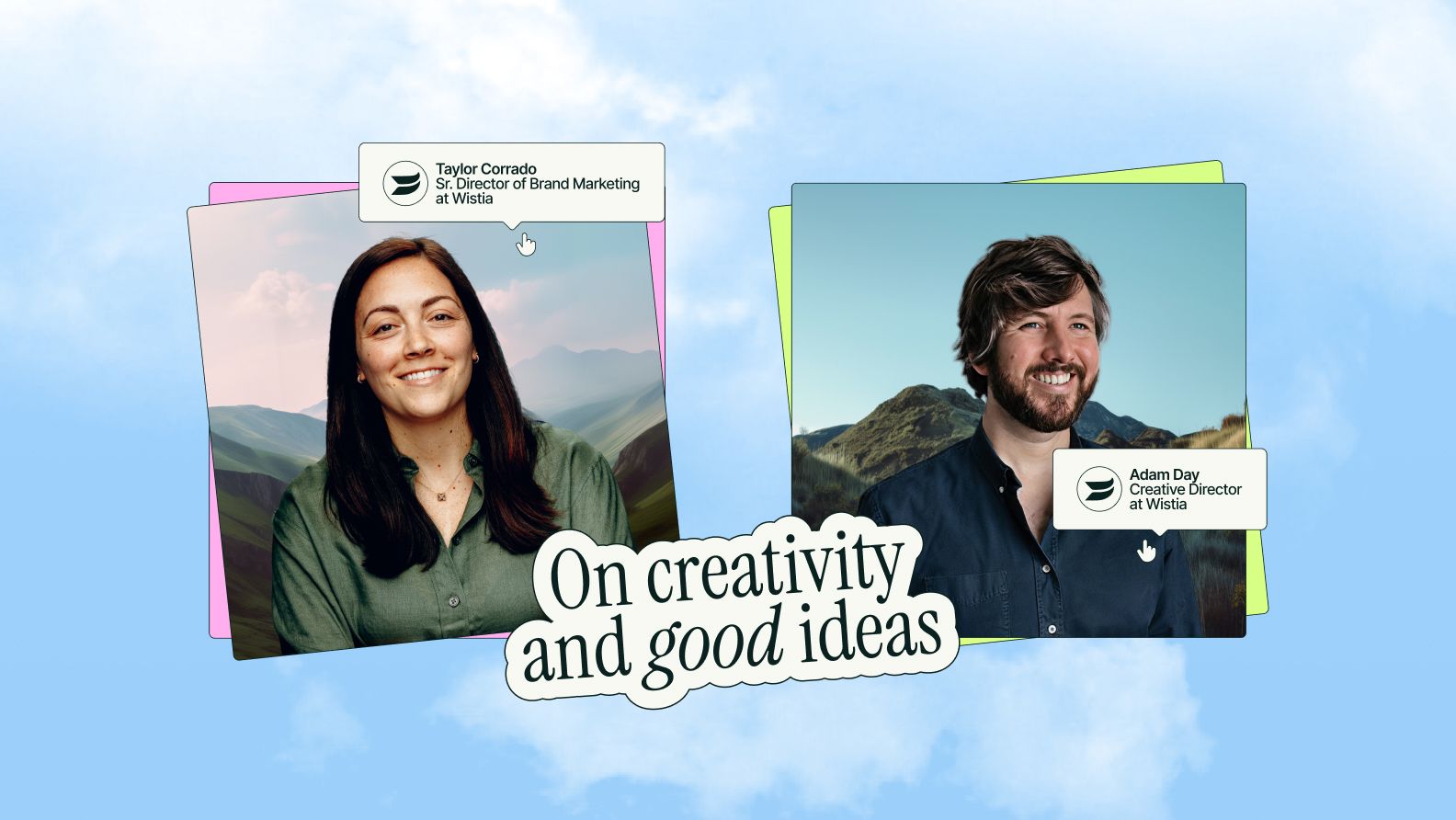
Open doors, unlock ideas: Inside Wistia's creative partnership
An SNL-inspired twist on a classic campaign.An analogue book that’s shipped over 700 copies around the world.A TikTok series narrated by a psychic raccoon.Okay, that last one’s made up. But one thing’s for sure, the creative and marketing teams at Wistia don’t just bring the creativity—they crank it to eleven.That’s why we had to speak with them for Superside’s latest guide, Inside Great Creative Partnerships. Wistia’s Adam Day, Creative Director, and Taylor Corrado, Senior Director of Brand Marketing, were kind enough to oblige and spill their secrets, including: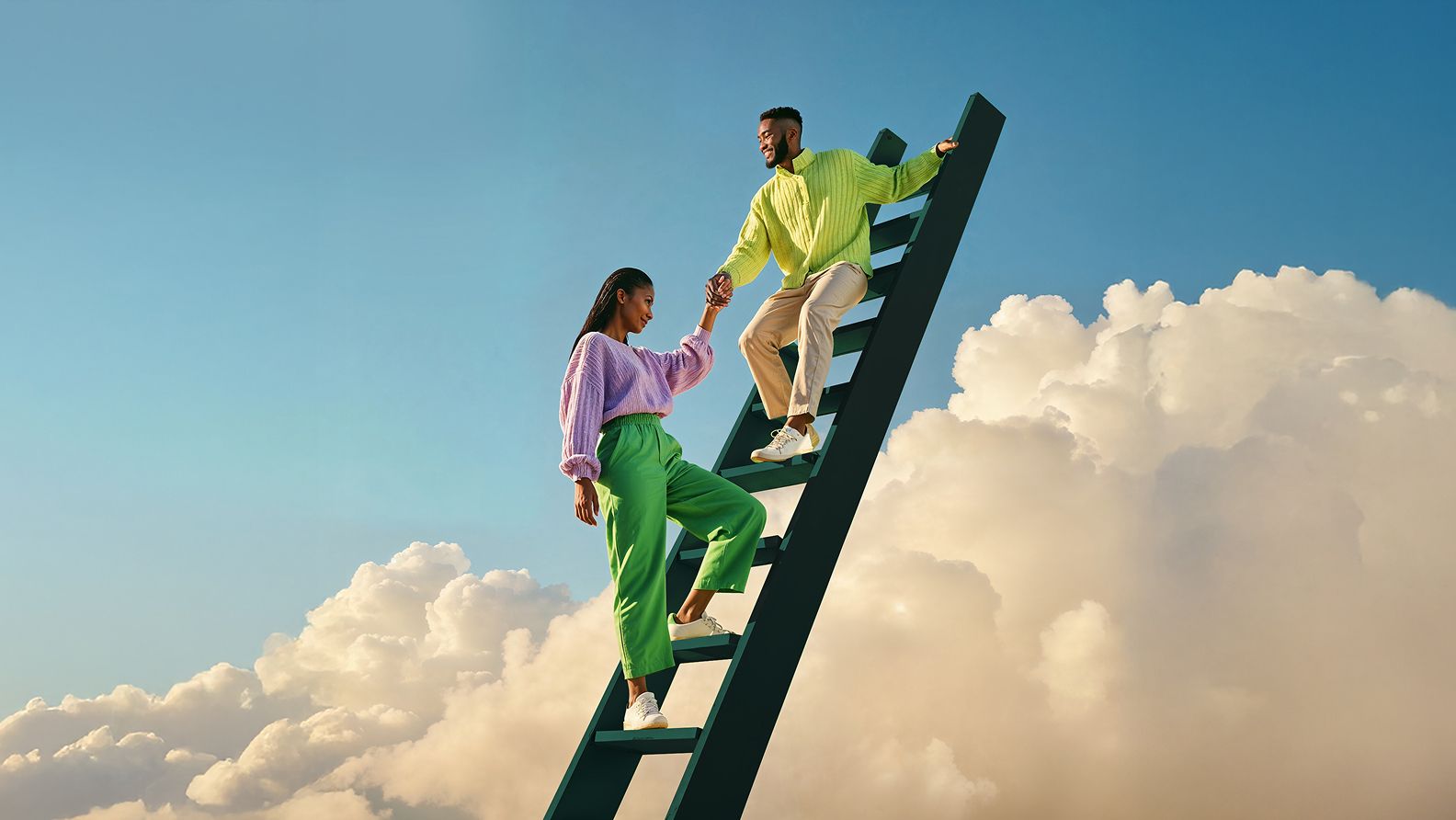
Get off the conveyor belt: 22 leaders on the secret to great work
“It can’t be an assembly line. You have to bake in collaboration—brainstorms, thought starters—before your jump to production. That’s where the best ideas come from.”Kevin Branscum, Senior Director of Brand Marketing at Typeform, shared this thought when we interviewed him for our latest guide. And he wasn’t the only one. The concept of partnerships—true collaboration between marketers and creatives—came up over and over again as the lynchpin for any successful campaign.That’s why we called the guide, Inside Great Creative Partnerships.It digs into hard-earned, real-life lessons from 22 top creative and marketing leaders shipping great work, together. We’ve already spilled their number one secret. But there are many more big ones, like:The source of great ideas